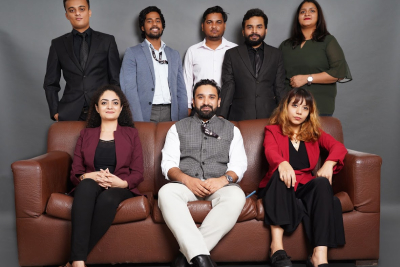
26
Jun
2025
Measuring PR Success: PRAG India’s Metrics and Evaluation Techniques
Table of Contents
- Introduction: The Importance of Measuring PR Success
- PRAG India’s Approach to PR Metrics and Evaluation
- Setting Clear Objectives and KPIs
- Tools and Technologies Used for Evaluation
- The Role of Media Coverage in PR Evaluation
- Social Media Metrics: Analyzing Engagement and Reach
- Sentiment Analysis: Understanding Public Perception
- Case Studies: Effective PR Campaign Measurement at PRAG India
- Challenges in Measuring PR Success
- The Future of PR Metrics and Evaluation
- Conclusion: How PRAG India Ensures Campaign Success through Metrics
Introduction: The Importance of Measuring PR Success
In the world of public relations (PR), measuring success is crucial. Gone are the days when PR was simply about sending press releases and hoping for coverage. Today, PR campaigns must be evaluated based on clear metrics to determine their effectiveness and impact. PRAG India understands the importance of measuring PR success and employs a data-driven approach to ensure that every campaign is aligned with client objectives and delivers tangible results.
PRAG India uses advanced tools and methods to track key performance indicators (KPIs) and evaluate the performance of its PR campaigns. By analyzing media coverage, social media metrics, and public sentiment, PRAG India ensures that campaigns not only generate visibility but also drive engagement, foster positive brand perception, and achieve measurable business outcomes.
PRAG India’s Approach to PR Metrics and Evaluation
At PRAG India, evaluating PR success is more than just tracking media mentions. The agency employs a multi-faceted approach that combines both traditional and digital tools, ensuring a comprehensive analysis of campaign performance.
Setting Clear Objectives and KPIs
The foundation of any successful PR campaign is setting clear objectives and defining the KPIs that will be used to measure success. PRAG India begins every campaign by working closely with clients to understand their goals, target audience, and desired outcomes. Common PR objectives might include:
- Increasing brand awareness
- Generating media coverage
- Enhancing thought leadership
- Driving traffic to the client’s website
- Managing reputation during a crisis
Once objectives are defined, PRAG India establishes KPIs to assess the success of the campaign. These KPIs could include metrics such as:
- Media reach (number of media outlets covering the brand)
- Social media engagement (likes, shares, comments)
- Website traffic and conversions
- Audience sentiment
- Influencer impact
By setting specific KPIs, PRAG India ensures that every campaign has a measurable outcome that can be tracked and analyzed.
Tools and Technologies Used for Evaluation
PRAG India utilizes a combination of advanced tools and technologies to evaluate PR campaigns. These tools allow the agency to gather real-time data, track campaign performance, and generate detailed reports. Some of the primary tools and platforms used include:
- Media Monitoring Software: Tools like Meltwater, Cision, and PR Newswire help PRAG India track media mentions, analyze the reach of press releases, and monitor how frequently and where the brand is being talked about in the media.
- Social Media Analytics: Platforms like Sprout Social, Hootsuite, and BuzzSumo help PRAG India track social media mentions, monitor audience engagement, and analyze influencer effectiveness across various social channels.
- Google Analytics: This tool is crucial for tracking website traffic, user behavior, and conversions. By analyzing traffic patterns, PRAG India can determine whether a PR campaign has driven users to the website or increased engagement with the brand.
- Sentiment Analysis Tools: Tools like Brandwatch and Talkwalker help analyze the sentiment of media coverage, social media conversations, and customer feedback. These tools provide valuable insights into how the public perceives the brand or campaign.
The Role of Media Coverage in PR Evaluation
Media coverage remains one of the most important metrics for assessing PR success. PRAG India evaluates the effectiveness of its media outreach by tracking:
- Media Impressions: This metric reflects the potential audience reached through media placements. By evaluating media impressions, PRAG India can assess how far a campaign has spread and how many people may have been exposed to the message.
- Quality of Media Placements: PRAG India doesn’t just track the number of media mentions but also evaluates the quality of those mentions. Positive media coverage in high-authority publications is more valuable than mentions in lower-tier outlets.
- Share of Voice: This refers to the percentage of media coverage that a brand has in comparison to its competitors. PRAG India tracks the share of voice to determine how much attention the brand is receiving within its industry or category.
Social Media Metrics: Analyzing Engagement and Reach
In today’s digital-first world, social media metrics are key to evaluating PR success. PRAG India tracks various social media KPIs to gauge how well the brand is engaging with its audience online:
- Engagement Rate: Engagement metrics such as likes, shares, comments, and mentions help PRAG India assess how actively audiences are interacting with the brand’s content.
- Reach and Impressions: These metrics indicate how far the content is spreading across social media platforms. By analyzing reach, PRAG India determines whether the content is resonating with the target audience.
- Influencer Impact: For campaigns involving influencers, PRAG India tracks the performance of influencer-generated content by monitoring engagement and conversions driven by their posts.
- Hashtag Performance: Hashtags are a great way to track the success of a social media campaign. PRAG India tracks the usage of branded hashtags to evaluate how many users are engaging with the campaign and contributing to the conversation.
Sentiment Analysis: Understanding Public Perception
One of the most valuable insights PRAG India gathers from its PR campaigns is public sentiment. Sentiment analysis helps assess how the public feels about the brand, campaign, or product. PRAG India uses sentiment analysis tools to:
- Evaluate Tone and Emotion: By analyzing the tone of media coverage, social media mentions, and customer feedback, PRAG India can gauge whether the sentiment is positive, negative, or neutral.
- Monitor Brand Health: Sentiment analysis is particularly useful for crisis management or reputation monitoring. By tracking shifts in sentiment over time, PRAG India can quickly identify any issues and adjust strategies accordingly.
Case Studies: Effective PR Campaign Measurement at PRAG India
While PRAG India respects client confidentiality, the agency’s success with measuring PR campaign effectiveness is demonstrated through the use of its robust metrics approach. For example, PRAG India has helped various brands enhance their visibility by:
- Launching a Product with Influencers: The agency used social media analytics to track the effectiveness of influencer campaigns, measuring engagement and conversions, and then adjusting content based on real-time feedback.
- Reputation Management: By monitoring media sentiment, PRAG India successfully helped a brand manage a reputation crisis by swiftly addressing negative coverage and amplifying positive messaging.
- Brand Awareness Campaigns: PRAG India used media coverage analysis and Google Analytics to measure the reach of press releases and the traffic driven to clients’ websites, refining strategies to maximize conversions.
Challenges in Measuring PR Success
While PRAG India uses advanced tools to measure success, several challenges come with evaluating PR campaigns:
- Attribution: It can be difficult to attribute specific outcomes (such as sales) directly to PR efforts, especially when multiple channels contribute to the final result.
- Evolving Social Media Algorithms: Social media platforms regularly change their algorithms, which can impact how content is displayed and engaged with. PRAG India must continuously adapt its social media strategies to keep up with these changes.
- Quantifying Intangible Benefits: PR is not always about immediate results. Measuring long-term benefits such as brand trust, thought leadership, and reputation can be subjective.
The Future of PR Metrics and Evaluation
As PR evolves, so does the way success is measured. PRAG India is constantly adapting to emerging technologies and trends that improve PR measurement, including:
- AI-Powered Analytics: Artificial intelligence (AI) is transforming how data is analyzed, providing deeper insights into audience sentiment and campaign performance.
- Integrated Data Dashboards: The future of PR measurement involves integrating data from multiple channels into a single, easy-to-understand dashboard. PRAG India is moving towards this integrated approach to provide real-time, actionable insights.
- Advanced Attribution Models: As digital and traditional PR efforts continue to overlap, more sophisticated attribution models will be used to pinpoint the exact impact of PR activities on business outcomes.
Conclusion: How PRAG India Ensures Campaign Success through Metrics
Measuring PR success is essential for ensuring that campaigns deliver real, quantifiable results. By setting clear objectives, using advanced tools, and employing data-driven methods, PRAG India ensures that every campaign is evaluated effectively. The agency’s commitment to constant measurement, learning, and adaptation ensures that clients receive the best possible outcomes from their PR investments.
Through robust metrics and evaluation techniques, PRAG India continues to redefine the standards of PR success and helps clients achieve lasting impact and visibility in an increasingly competitive landscape.





